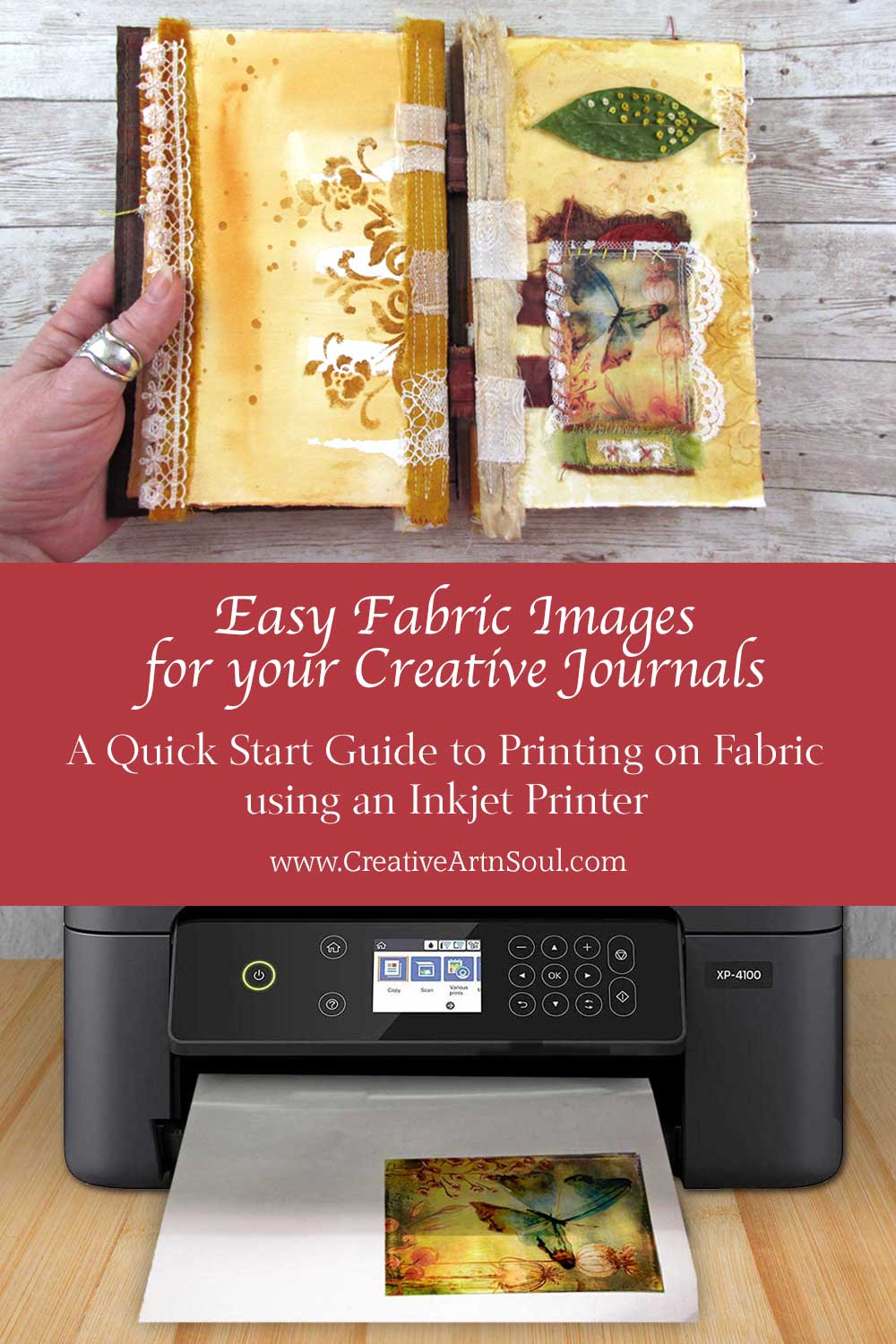
Learn just how easy it is to print photos on fabric. Then use them in your junk journals and other creative journals.
Journals that tell a visual story are creative and fun to make. Whether it’s art journals, junk journals, or stitched mixed media journals, using photos and images is a perfect way to develop a story for your journal without the need for too many words.
Small images that are sized to fit on a journal page can easily be printed onto paper or cardstock, but printing photos onto fabric results in prints that are softer and easier to sew.
How to Print Photos on Fabric to Use in Your Junk Journals
When you print photos on fabric, all you need is a home inkjet printer. I’ve been using inkjet printers to print my own images and photos onto fabric for almost 20 years.
Back in the “old days” it was quite the challenge to print images onto fabric and get good results. However thanks to today’s technology it’s has never been easier to get beautiful fabric prints that are perfect for including in all your stitched art and sewing projects. And yes, even junk journals, handmade journals and art books.
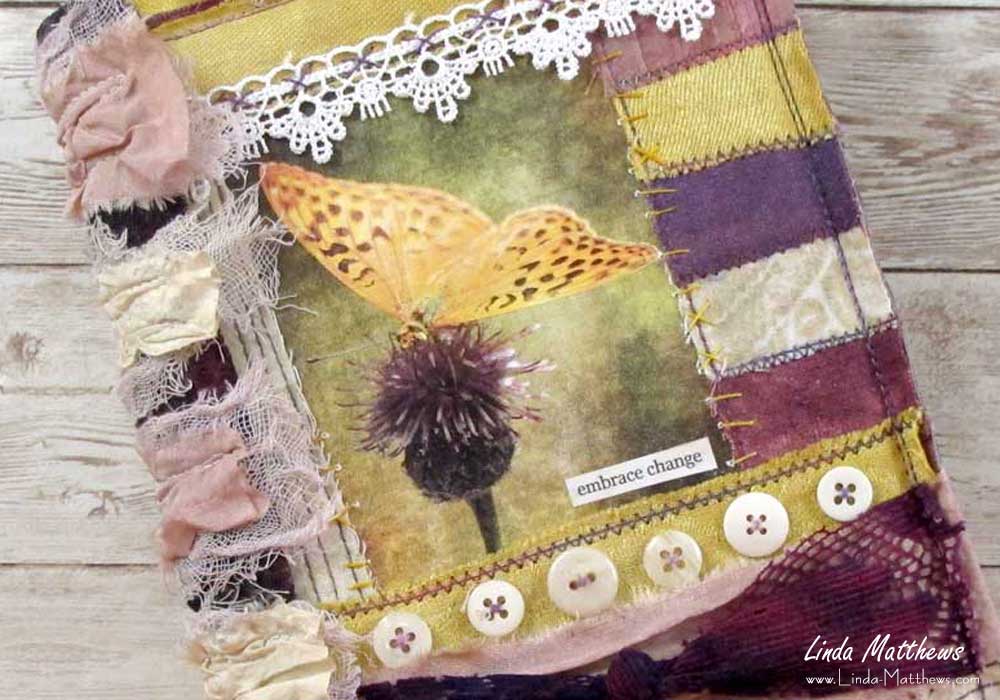
I personally love to print photos on fabric and use them in all my stitched art and creative journals. Images help to tell a story without the necessity of adding a lot of words.
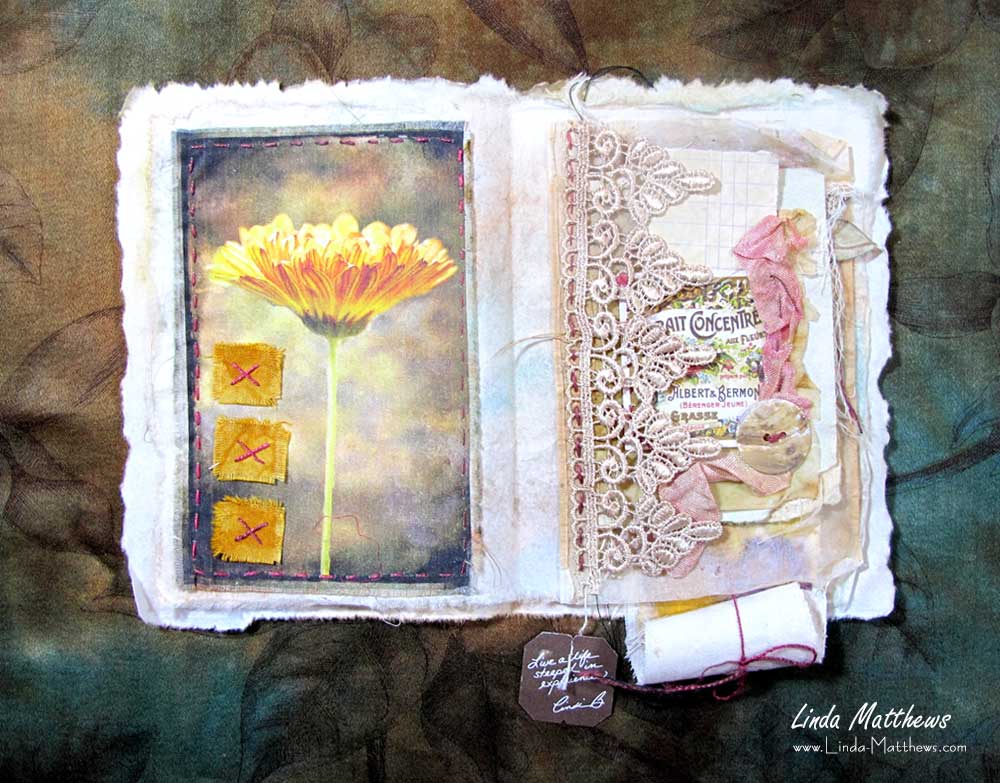
With fabric prints you can also add additional texture by adding machine sewing or hand stitching, and other fabric elements to create stitched collages which can be sewn or glued on the journal pages.
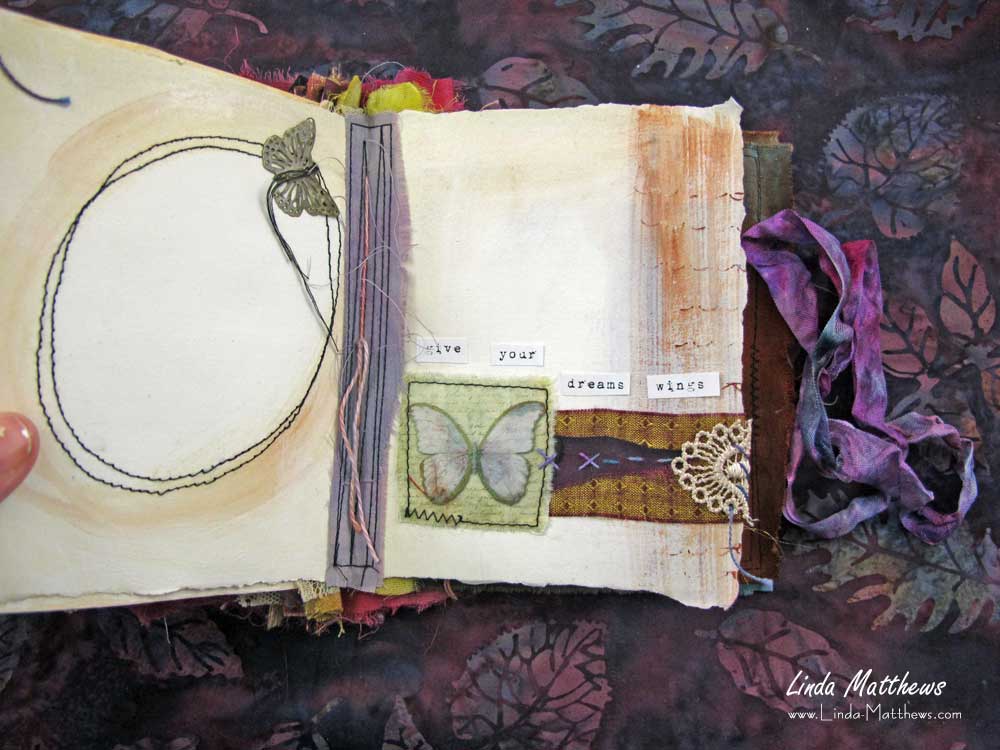
Supplies Needed to Print Photos on Fabric
1. A photo or image
2. An inkjet printer
3. Fabric that is adhered to a backing sheet:
Commercial Fabric Sheets
DIY Fabric Sheets:
Freezer Paper
Bubble Jet Set
Bubble Jet Rinse
Photos and Images
The easiest way to print a photo or image is directly from a photo editing program such as Photoshop or Photoshop Elements. When printing small images, it’s easiest to make a document the same size as a piece of copy paper. Then you can position your image, or multiple images, onto it. This method makes it easy to print a full page with exact positioning of the images.

Using a photo editing program allows you to resize and touch up your photos prior to printing. It’s worth remembering that the quality of your inkjet print will be only as good as the quality of the photo or image you are using. You should also use a high resolution image of around 200-300 dpi which will give you a quality print.
Photos can be scanned into your computer or printed directly from the scanner. This method however this gives you less control over the quality of your photo.
Inkjet Printers for Printing Photos on Fabric
You can print photos on fabric using any home inkjet printer provided you use fabric that is pretreated which means you can wash your fabric prints if you want to without fear that the ink will run.
Before you print your photos on fabric, it’s recommended that you first make one or two test prints first to determine the best print settings. Some printers will print fine using the “Standard” print setting but some printers print better using the “Photo” print setting. Once you’ve determined the best settings, write them down somewhere so you remember them for next time.
The best type of printer is one that has an L-shaped feed. This type feeds from the top and spits out at the front, passing through the printer with a gentle curve. This is one of the most common types of printers.
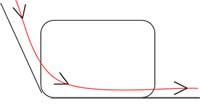
Printers that have a U-shaped feed – one that passes through the printer with a sharp u-turn, are not recommended for printing on fabric. This is because the fabric can possibly come loose from the backing paper and cause paper jams.
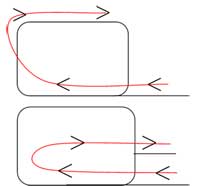
Fabric Adhered to a Backing Paper
In order for your fabric to feed through the printer, you need to use fabric that is adhered to a paper backing. This ensures that the fabric will feed through the printer smoothly just like paper.
The easiest way is to use commercial fabric sheets such as EQ Printables, however you could also iron a piece of white fabric to some freezer paper.
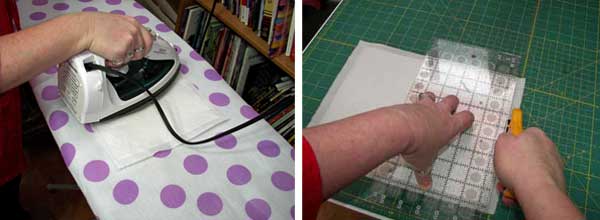
If you want your prints to be water-resistant and/or washable, you need to use commercial fabric sheets that are already pretreated, or make your own pre-treated fabric sheets. Note that you need to pre-treat the fabric prior to printing
You can pre-treat your fabric yourself to make the prints permanent using Bubble Jet-set, which is a liquid solution that you use to soak your fabric prior to printing. This pre-treatment will make your fabric prints permanent and washable. Once pre-treated, then adhere the fabric to a piece of freezer paper.
Or for a quick and no-fuss method, simply use commercial fabric sheets such as EQ Printables which are already pre-treated and adhered to a paper backing. These fabric sheets are my preferred method for printing standard size prints and will give you a fabulous result every time.
Ready to Print Your Photos on Fabric?
When you’re ready to print your photos on fabric, simply place the fabric sheet in your printer just like a piece of copy paper and print.
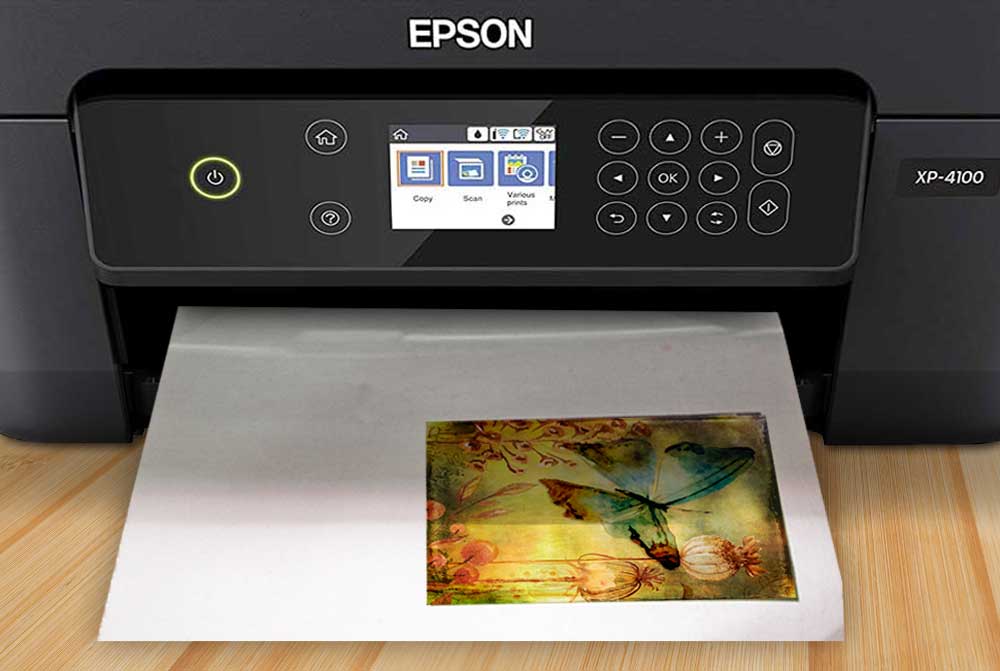
Once your image is printed, allow the ink to dry.
If you used Bubble Jet-set to pre-treat the fabric, then rinse the print using a mild detergent such as Bubble Jet Rinse to remove any excess ink, allow to dry flat on a towel, then iron the wrinkles out with an iron.
If you used commercial fabric sheets, follow the instructions for rinsing.
Your fabric print is now ready to use!
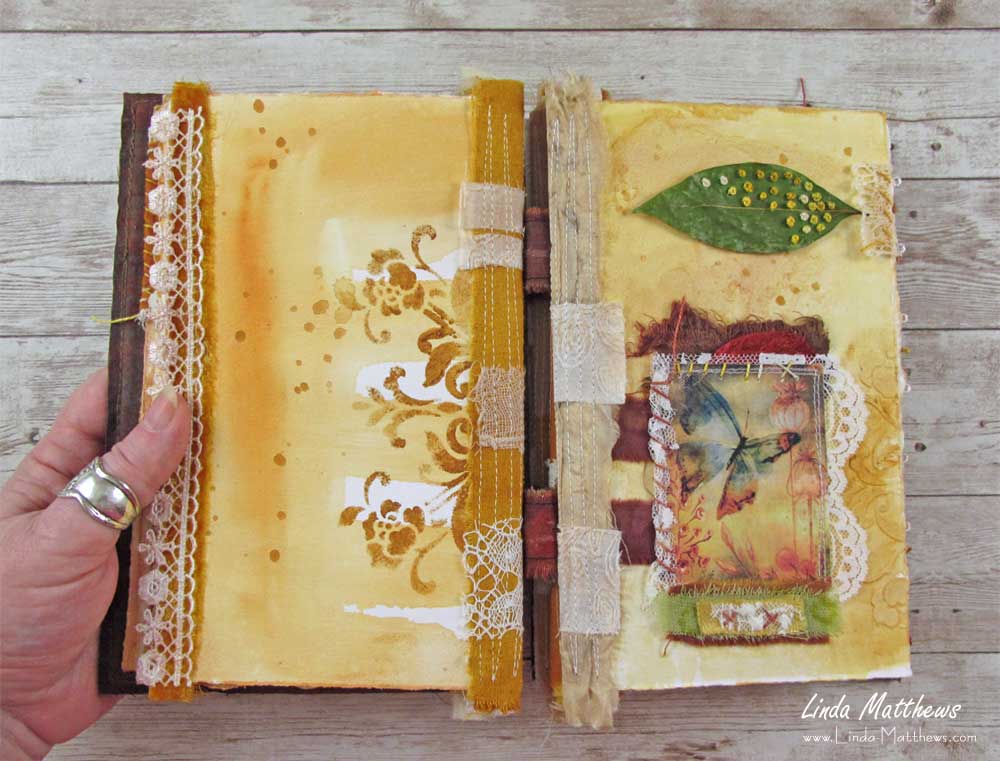
Save this pin to your favorite Pinterest board!
